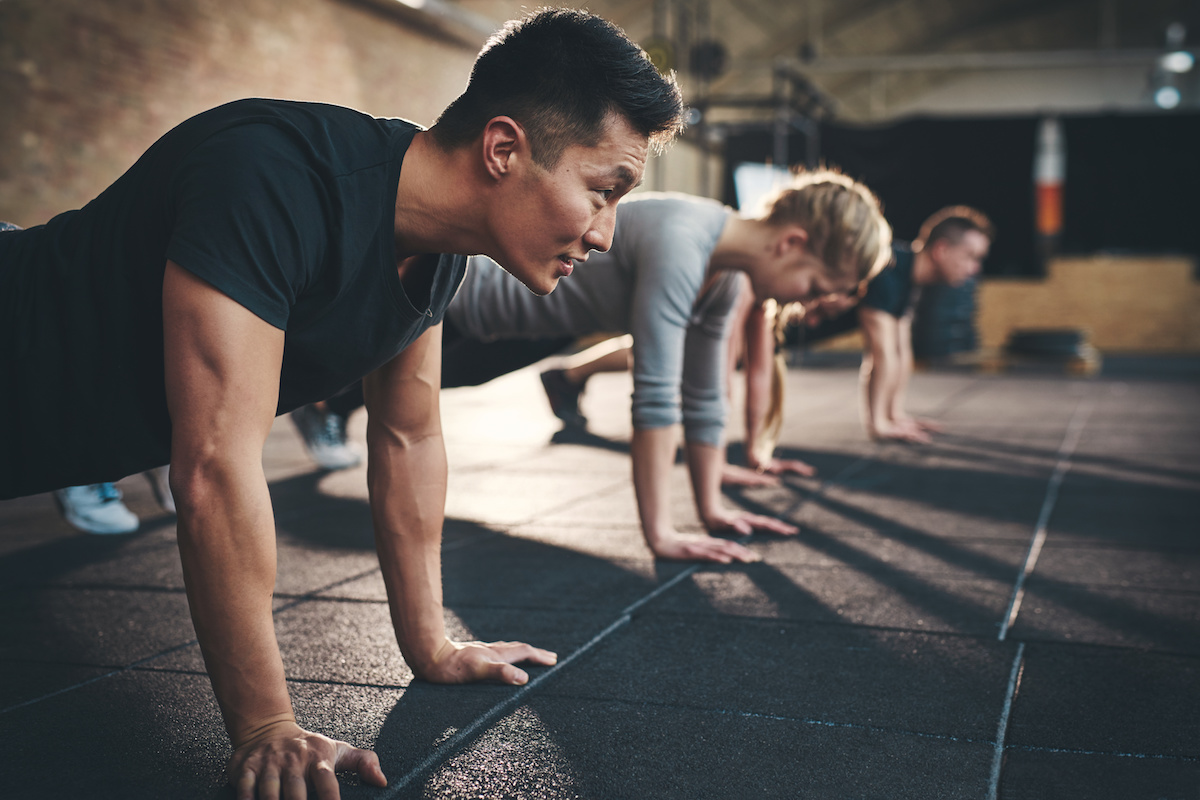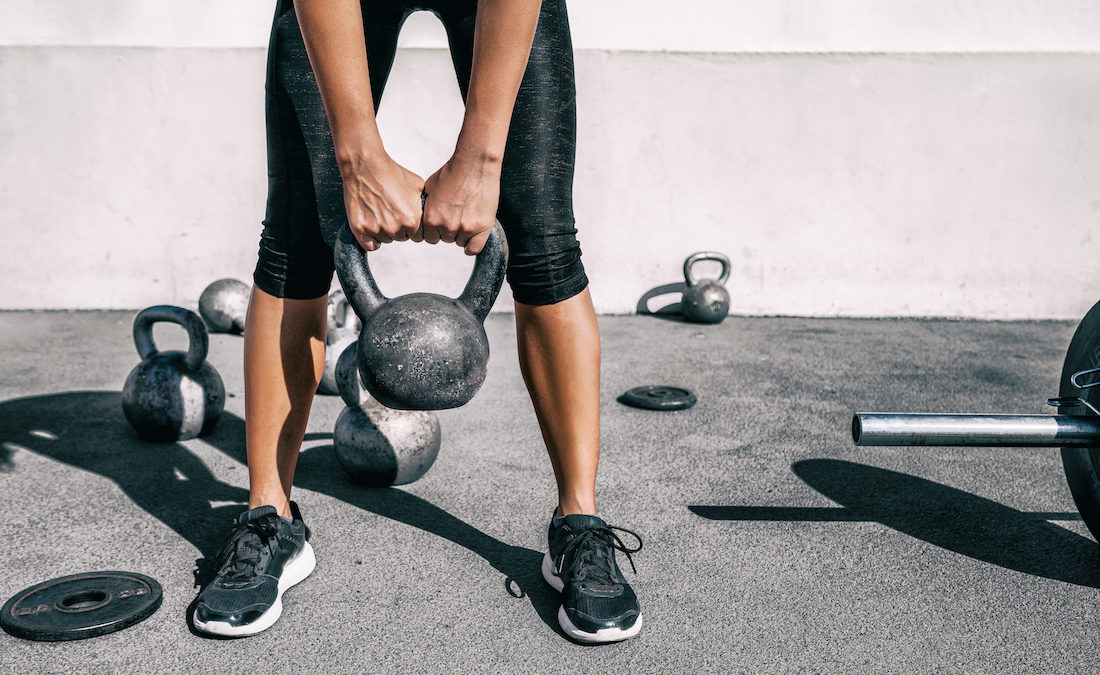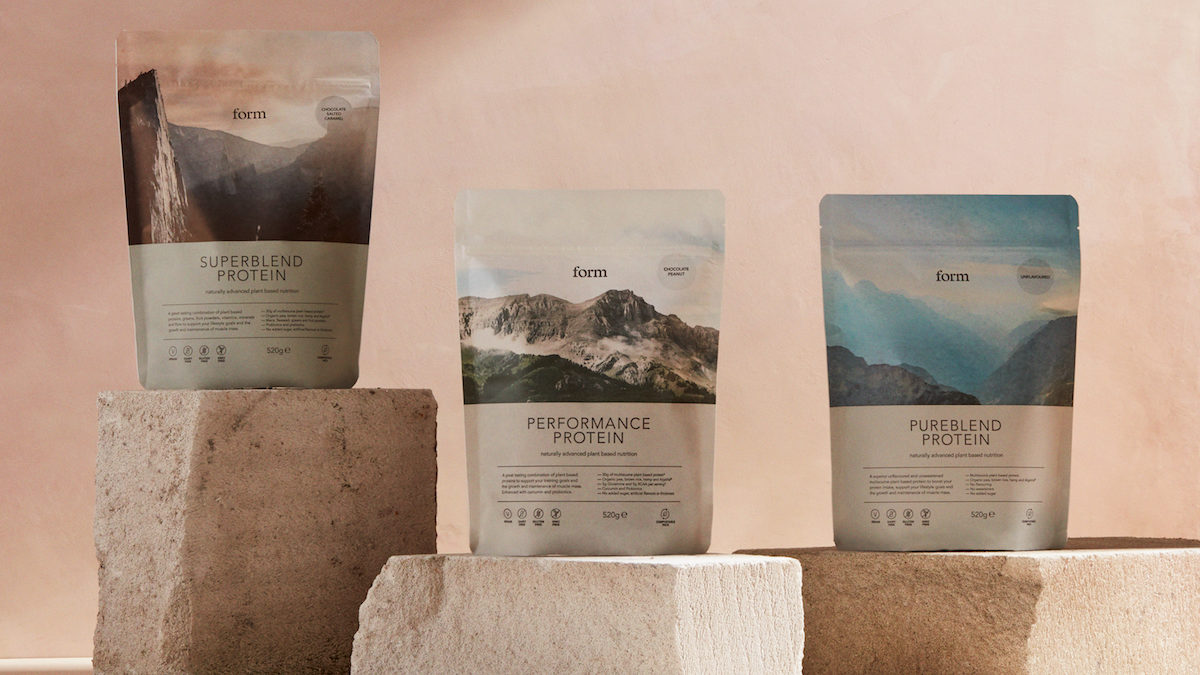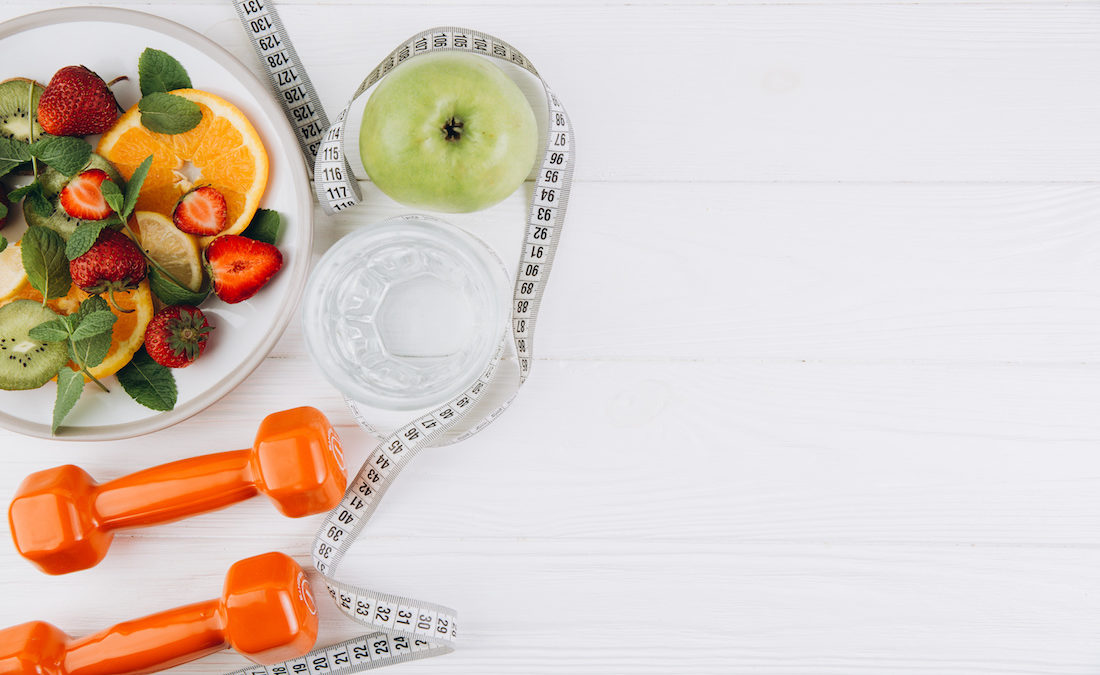Body Composition 101: The Basics of Gaining Muscle and Losing Fat

When it comes to fitness for the sake of looking good, every #gymgoal can be boiled down to two universal aims: how to lose fat and gain muscle. That’s what we want, right? Well, as with anything fitness and nutrition related it’s easier said than done.
The importance of these goals goes beyond mere aesthetics too. Muscle fortifies your bones and ligaments, makes everyday activities easier and helps protect your body as you age, while a surplus of fat on the body increases your risk of developing many potentially serious health conditions.
So as gyms start to open up across the country again, here’s Form’s head of nutrition Dr. Adam Collins on how the body goes about achieving these dual goals and how you can do your bit from a nutritional standpoint. Remember, abs are made in the kitchen (but going to the gym will certainly help too).
How To Gain Muscle
A goal for many people is to try and build muscle, either for the purpose of improving strength and performance or to improve the way they look. This is altering your body composition by adding lean mass.
Over a typical day there are times when you are synthesising protein and times when you break it down, but overall your body stays in protein balance (i.e. no change). To gain muscle mass you need to tip the balance towards net protein synthesis.
One trigger of protein synthesis is physical strain through the muscle, for example a weight or force that is literally trying to pull your muscle apart. Lifting heavy weights or ‘resistance’ exercise by its nature is conducive to this effect. The resultant stimulation is designed to repair any physical damage and reinforce the muscle in order to better cope with the strain next time. This is called ‘hypertrophy’. The result is a bigger, stronger and more powerful muscle. This is all possible provided that you supply the fuel required.

Irrespective of exercise, diet is an important independent trigger of muscle protein synthesis, in particular carbohydrate and amino acids (from protein in the diet). Amino acids are the building blocks by which you can construct new muscle protein.
Carbohydrates will trigger the release of insulin, which is a potent stimulator of muscle synthesis and also allows for the amino acids to get into the muscle. Branch chain amino acids (BCAAs) leucine, isoleucine and valine are suggested to be advantageous, for example leucine is insulinotropic (i.e. triggers insulin release), helping stimulate protein synthesis. However, all essential amino acids in general are effective, and non-essential amino acids can be manufactured from carbohydrate. The upshot is eating is just as important as exercise.
Exactly how much protein you need a day is a much researched area. Our recommendation is based on a review of this research and the International Society of Sports Nutrition recommendations and is 1.4 to 2.0 g of protein per kg bodyweight a day for physically active individuals. That is if you weigh say 70kg you need 98 – 140g of protein a day.
Supplements should not replace a healthy diet but can be convenient ways of ensuring adequate protein intake. When and how much should you take? Contrary to popular belief, you do not need to take protein on board immediately after exercise. The stimulation of exercise will last for several hours after exercise, so what’s more important is your protein intake over 24 hours. However, there is no reason not to take protein after a workout and thus if this habit helps you to keep your total protein intake up it is a good habit to get into.
A final point is to remember that by definition adding lean mass reduces your body fat percentage, a fact that is sometimes overlooked. Ultimately this is one of the reasons why adding lean mass is so advantageous, get stronger, lower your body fat percentage and look better, what’s not to like.

How To Lose Fat
Having tackled a common goal for many, that of gaining muscle, we come to the key question of “how can I lose fat”?
Firstly, a few caveats before delving in to an answer. The ability to lose fat is not a closely guarded secret, there does not exist a magic bullet, formula or method that simply turns on a ‘fat loss switch’.
Many people profess to be able to ‘unleash the fat burn’, often at the cost of paying for the book, programme or product they are associated with, but there really is no way to guarantee it will work. And remember knowledge is not correlated to bicep size or six pack abs.
The truth is very simple, to lose fat you need a calorie deficit, there is no circumventing the rules of thermodynamics.
Nevertheless, there certainly exists some very good scientific understanding as to exactly how we use and lose fat that we can leverage to help us lose fat as quickly and easily as possible.
The first thing to understand is that you can almost be certain of fat loss if you just lose overall body weight with a calorie deficit. Experimentally, it has been repeatedly shown that over the course of any weight loss intervention the majority (typically 75-80 percent) of weight is lost as body fat.

This may be lower at early stages of weight loss, where more water and protein is lost, but even on very low calorie diets (typically 600-800 kcal/day), people still lose the majority of weight as fat. Hence, losing weight is not just conducive to weighing less, but also carrying less fat both proportionally and in absolute terms.
The further good news is that the first thing to go when losing fat will be visceral fat (the stuff around your organs), which significantly improves your metabolic health. And so the argument goes that if you are overweight or obese, the best strategy is to lose weight through simply cutting calories.
Of course though, many of us want to specifically target fat loss, without losing any muscle. In this scenario we can start to explore how the interplay of diet and exercise could be utilised for maximum effect. From a dietary point of view, even if the calories consumed are not excessive, looking at the composition of the diet may be key. In simple terms, moderating the intake of refined carbohydrate foods (sugary foods, processed grains like white bread), coupled with a reduced intake of saturated fat (processed meats and animal products) will help tip the balance away from fat storage.
Despite the popularity of some diets, there is no real need to go to the extreme of removing the carbohydrate altogether, just be smarter as to when and how often you are eating these foods. Limiting carbohydrate (or food intake generally) to only certain meals of the day, or certain times may be one strategy.
For example limiting eating in the morning or evening, or only eating within a certain time window of the day, a concept known as ‘time restricted feeding’. This allows your body to shift into periods of fat release on a regular basis, helping you maintain or lose body fat.
Exercise is equally important for fat loss in several ways. Firstly, exercise will trigger your body to start releasing fat from fat stores to be used for energy, with the fat burning effect of exercise extending long after the exercise itself has ceased. To that extent any exercise has a fat burning element to it, not just endurance based, lower intensity exercise.

Secondly, the body adapts to the stress of exercise in order to better cope next time, hence the concept of exercise training is important to appreciate. In particular if that exercise is fuel depleting (e.g. endurance exercise or HIIT training) your muscles can adapt to become better fat burners over time. So exercising to become a better fat burner is more important than exercising for the calories burnt during that exercise.
Lastly how you eat around your exercise is also important as you can enhance or blunt the exercise effect.
Exercising fasted or without any carbohydrate may exaggerate the stress of exercise and so enhance the beneficial adaptation you get, specifically for endurance based exercise, especially for men. In contrast, overdoing the carbs after exercise may also blunt the fat burning effect of exercise in the recovery period, particularly for women.
So if you want to maximise your chances of burning fat, it’s no secret, eat smarter, think about timing of food and exercise.
This article is an adapted excerpt from our short course on body composition. The course encompasses five emails introducing you to the basics of body composition, what it is and how you can change and influence it, all sent daily to your inbox. To find out more or sign up click here.


















